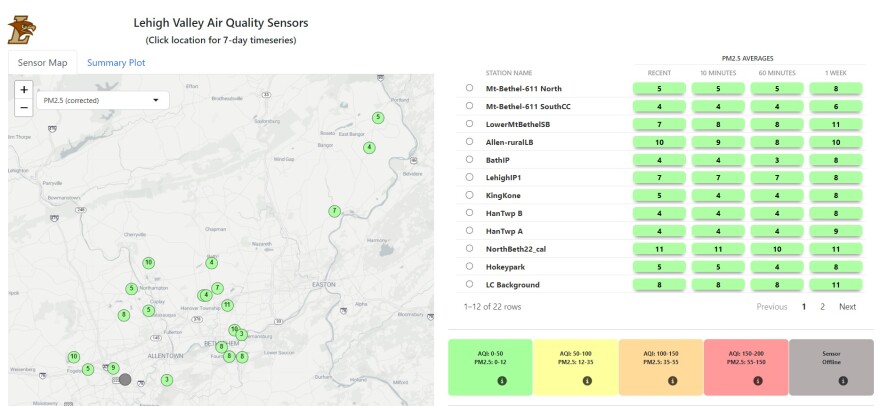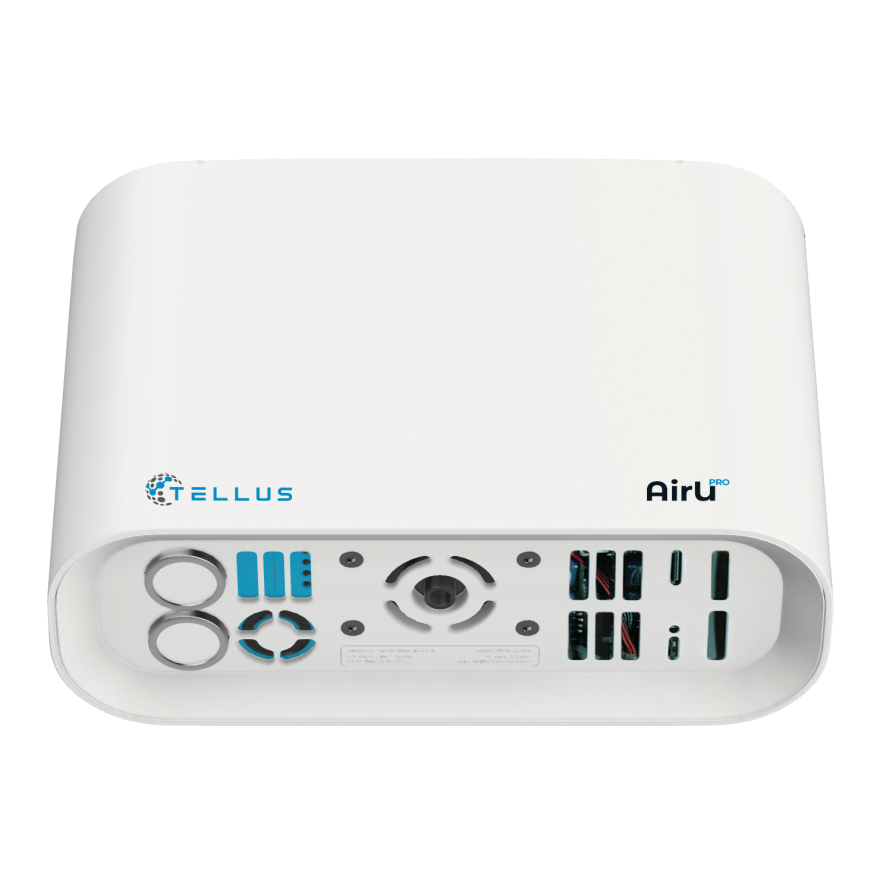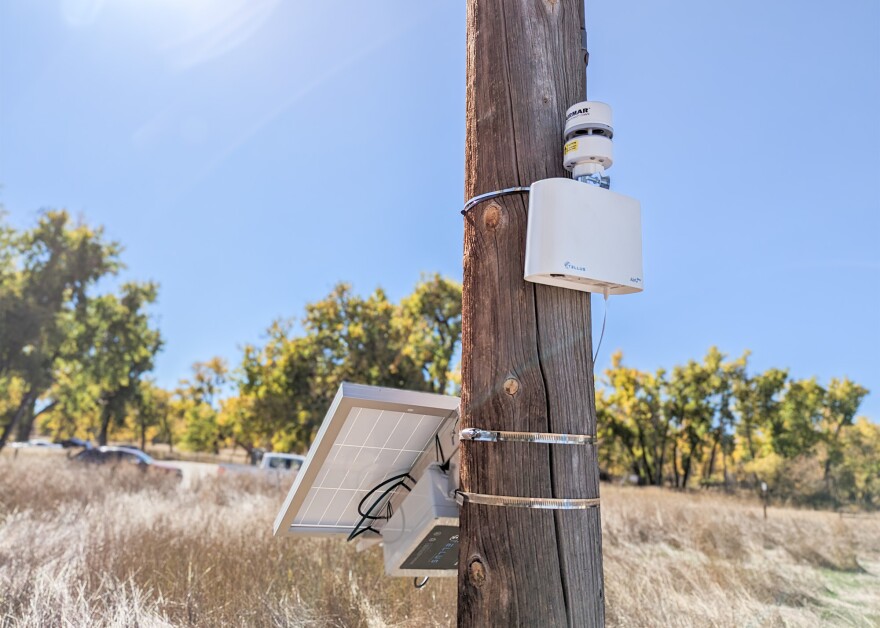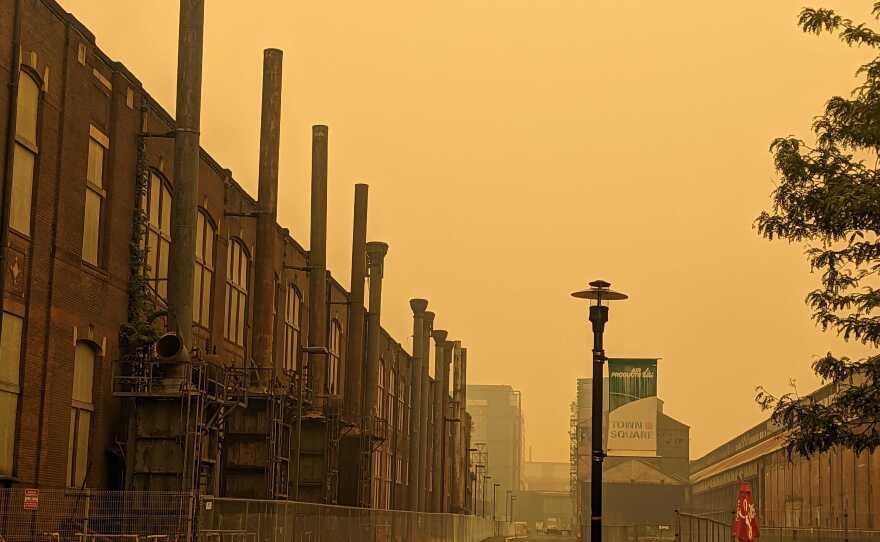ALLENTOWN, Pa. — When it comes to public health and threats against it, understanding is key, Vicky Kistler says.
“Understanding what you can be exposed to and understanding what environmental factors influence your health really helps you in planning a course of action to address them,” said Kistler, the city’s community and economic development director. “ … Many people understand the impact that air quality has on quality of life, on learning, on kids' absenteeism, on a number of different factors that influence your ability to succeed.
“We are ecstatic because it's our hope that we can start to address air quality issues on many fronts.”
A new outdoor air quality monitoring project is coming to the city this summer, officials announced in mid-March. The city is partnering with the Center for Sustainable Innovation, or CSI, a public benefit corporation, and national nonprofit US Ignite to place air monitors outside a handful of city schools.
The data collected through the initiative, officials said, will help inform decision-making to improve residents’ health in the city, known for its poor air quality.
“We were very much looking forward to analyzing this data and then partnering with folks, starting with the city of Allentown. We've had discussions with them about how this data could be leveraged, for community impact, and particularly around social determinants of health.”Terrence DeFranco, executive director for the Center for Sustainable Innovation
“We think there's a lot of benefit that comes from this,” said Terrence DeFranco, CSI’s executive director. “We were very much looking forward to analyzing this data and then partnering with folks, starting with the city of Allentown.
“We've had discussions with them about how this data could be leveraged, for community impact, and particularly around social determinants of health.”
CSI was launched by city-based Iota Communications Inc., or IotaComm, a wireless communication and data analytics software company, with Fintech.TV, a global news media platform. DeFranco also serves as CEO at IotaComm.
Air quality monitoring in the Lehigh Valley
The Lehigh Valley is no stranger to air quality issues, especially due to the proliferation of truck traffic and the ongoing, worsening effects of climate change.
Smoke from Canadian wildfires last year gave the region some of the worst air quality in the nation. The month prior, two Northampton County industrial facilities were included on a ranking of Pennsylvania’s top climate polluters.
Allentown last year was named the asthma capital of the U.S. by the Asthma and Allergy Foundation of America, climbing from third place the year prior. Recently, in March, Allentown was ranked 11th for the most challenging places to live with pollen allergies, according to the Allergy Capitals report, released by the Asthma and Allergy Foundation of America.
Amid widespread air quality issues, the Valley’s officials and researchers have stepped up to study where pollution is concentrated.
In August, officials from both Lehigh and Northampton counties launched Lehigh Valley Breathes, a year-long, $100,000 project aimed at monitoring air quality amid emissions from trucking and warehousing.
So far, 33 of the 40 PurpleAir monitors have been installed throughout the region, and preliminary data has shown fine particle pollution in the region is highest near warehouses and highways. The most recent update, released at the end of last month, emphasized how the project was designed to engage residents through citizen science.
Residents can view readings from the sensors on the Shiny App, the project’s online dashboard.

Asked if residents will have access to data through the city’s project similar to the Lehigh Valley Breathes dashboard, DeFranco said the data will be private, but added “we're more than happy to collaborate with anyone.”
“If there's a partner that would like for us to work together, and the result is that the information is made public, we're happy to accommodate that,” he said. “We're not sitting here hoarding it. We're just not built for that — that's two government entities that got together.”
In addition to the city’s soon-to-launch project and Lehigh Valley Breathes, there are two other air quality monitors in the Valley, in Freemansburg and East Allentown. The state Department of Environmental Protection uses the monitors to make sure that the region complies with the federal Clean Air Act.
The EPA’s website includes an interactive map of air quality monitors nationwide.
‘A catalyst’
For the city and CSI’s project, slated to kick off this summer, seven TELLUS air quality monitors will be installed outside city schools. With almost two dozen schools, data will be collected from about a third of the district.
The AirU monitors are powered by USB-C cables, connecting to Wi-Fi or using a SIM card to store data, according to the TELLUS website. There are sensors for temperature, pressure and humidity; carbon monoxide; volatile organic compounds; and fine particle pollution, among others.

Alongside capturing air quality data, officials are also trying to work with local universities and educational centers to analyze it.
“For us, we're trying to use this as a catalyst to really start getting the whole community involved on the quality of air, social determinants of health, improving health and safety but also how to leverage technology and data to drive a better thriving community,” DeFranco said. “And, using this data as part of the educational curriculum.
“It's not just for us to look at and say, ‘OK, we're breathing bad air.’ But, perhaps there are ways that leveraging this data can help feed into educational curriculum.”
Other details on the project are sparse, like the exact locations of the air monitors, the date of installation as well as the cost.
“I'm not aware of any costs, but they might be doing some specific work for a different department and it may have a cost, but I'm not aware of that,” Kistler said.
Asked for the cost of the project, DeFranco said it is being funded by CSI, but officials are not disclosing it.
The project also follows a new partnership between IotaComm and the school district.
The fifth-largest district in the commonwealth — two days before the air monitoring project was announced — hired IotaComm for indoor air monitoring.
“Ensuring the well-being and academic success of our diverse student population are our greatest priorities, and selecting IotaComm to provide [indoor air quality] services aligns perfectly with our goals of providing a safe and healthy learning environment for every student and the adults entrusted with their care,” said Carol Birks, district superintendent, in a news release. “It is crucial to invest in innovative solutions that offer tangible benefits, and IotaComm’s solution helps us improve indoor air quality.”
Similar to the outdoor sensors, indoor ones track volatile organic compounds, humidity, temperature, occupancy, fine particulate matter, CO2 and light levels — “factors proven to contribute to student performance, health, attention spans and attendance,” officials said.
The district signed with IotaComm in October, according to the company’s website, and six monitors have already been installed, with more expected.
LehighValleyNews.com has reached out to the district for more information.
"In the last several years, a growing body of scientific evidence has indicated that the air within homes and other buildings can be more seriously polluted than the outdoor air in even the largest and most industrialized cities," according to the Environmental Protection Agency. "Other research indicates that people spend approximately 90% of their time indoors.
"Thus, for many people, the risks to health may be greater due to exposure to air pollution indoors than outdoors."
















